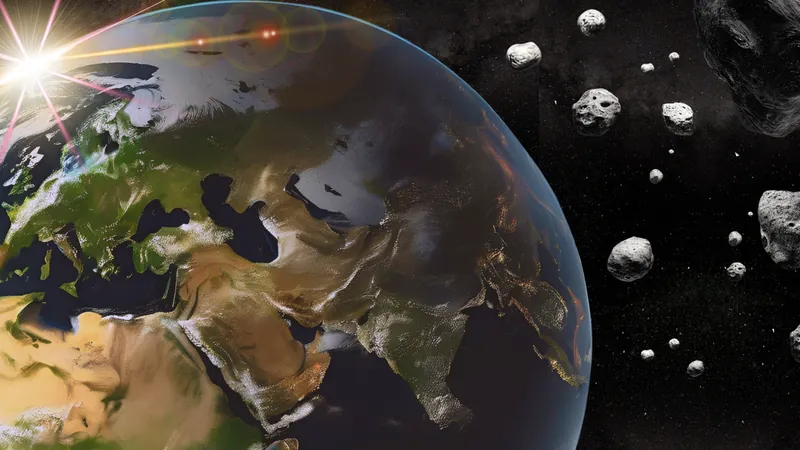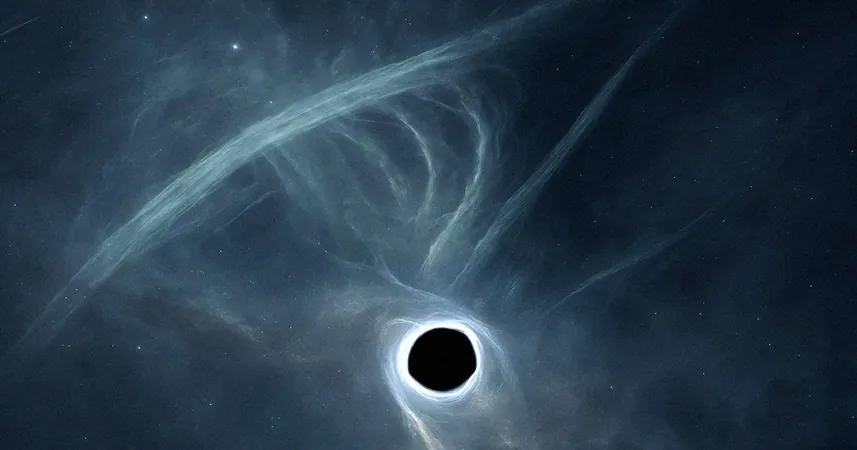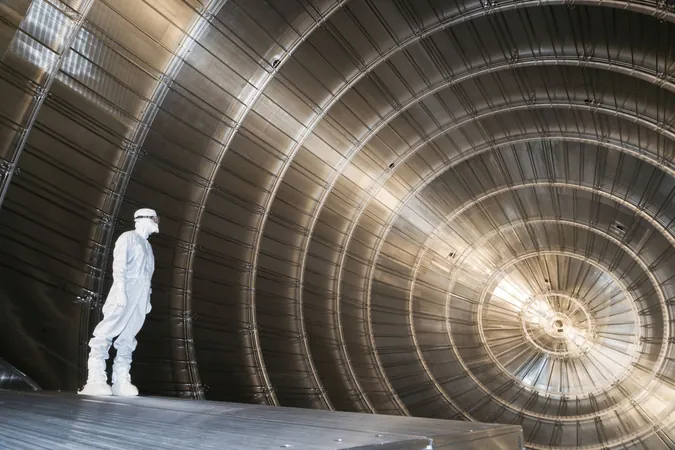
Unraveling the Mysteries of the Solar System: Meteorites and Their Origins Exposed!
2025-03-24
Author: Yu
Unraveling the Mysteries of the Solar System: Meteorites and Their Origins Exposed!
Ten years in the making, a groundbreaking project led by astronomers from renowned institutions like NASA and the SETI Institute has finally shed light on the origins of meteorites and asteroids within our solar system. This initiative, dubbed the Global Fireball Observatory, has created a state-of-the-art network of all-sky cameras spanning the globe to capture meteorites as they streak through Earth’s atmosphere.
Peter Jenniskens, a prominent figure in the project from the SETI Institute and NASA Ames Research Center, described the effort as a "decade-long detective story." He expressed excitement over the initial results, stating, "We now have the first outlines of a geologic map of the asteroid belt," which has long fascinated scientists and stargazers alike.
By collaborating with other research groups that set up similar networks, astronomers have successfully tracked 17 meteorite falls, leading to significant insight into the formation and evolution of the asteroid belt, a crucial region between the orbits of Mars and Jupiter that is home to over a million asteroids.
From the Abyss of Space to Earth: What are Meteorites?
These remarkable space rocks, which survive their fiery descent and land on our planet, offer a glimpse into the ancient materials present at the dawn of the solar system, approximately 4.5 billion years ago. Most meteorites originate from the main asteroid belt, consisting of remnants of planetesimals—building blocks of planets that never fully merged.
One intricate aspect of the asteroid belt is the existence of debris clusters, which form from larger asteroids that shatter in collisions. These fragments cluster together, giving rise to what astronomers refer to as asteroid families. By analyzing the radioactive elements in meteorites, researchers can estimate their ages and correlate them with the dynamical ages of asteroid families based on their spatial distribution, which shifts due to gravitational interactions and collisions.
New Discoveries in Meteorite Origins
According to Devillepoix and Jenniskens, the team has tracked the origins of 75 meteorites, revealing fascinating trends. They noted a growing understanding of how different types of meteorites arrive from varying orbits; in their recent publication in *Meteoritics & Planetary Science*, they connected 12 iron-rich ordinary chondrite meteorites, known as "H chondrites," to the Koronis debris field, believed to be relatively young at 5.8 million years.
Additionally, these research efforts uncovered more instances of meteorites tracing back to distinct areas within the belt, linking some of them to families like Nele and Massalia, with histories marked by catastrophic collisions dating back hundreds of millions of years.
A Bright Future for Asteroid Research
Despite the advances made, as Devillepoix and Jenniskens remarked, this is just the tip of the iceberg. While they’ve laid a strong foundation for mapping the asteroid belt, uncertainty still looms for some meteorite assignments. The excitement of uncovering the solar system’s secrets has only just begun, with more meteorite falls awaiting documentation.
"As the first cartographers unveiled Australia’s coastline, our evolving map hints at a continent of discoveries still left to explore,” Jenniskens mused. With ongoing advancements in technology and collaboration, the future of meteorite research is looking exceptionally bright, holding the promise of deeper insights into the universe and the complex tapestry of our solar system's history.
Get ready, as we edge closer to unlocking the deep secrets of space! Stay tuned for more groundbreaking discoveries!




 Brasil (PT)
Brasil (PT)
 Canada (EN)
Canada (EN)
 Chile (ES)
Chile (ES)
 Česko (CS)
Česko (CS)
 대한민국 (KO)
대한민국 (KO)
 España (ES)
España (ES)
 France (FR)
France (FR)
 Hong Kong (EN)
Hong Kong (EN)
 Italia (IT)
Italia (IT)
 日本 (JA)
日本 (JA)
 Magyarország (HU)
Magyarország (HU)
 Norge (NO)
Norge (NO)
 Polska (PL)
Polska (PL)
 Schweiz (DE)
Schweiz (DE)
 Singapore (EN)
Singapore (EN)
 Sverige (SV)
Sverige (SV)
 Suomi (FI)
Suomi (FI)
 Türkiye (TR)
Türkiye (TR)
 الإمارات العربية المتحدة (AR)
الإمارات العربية المتحدة (AR)